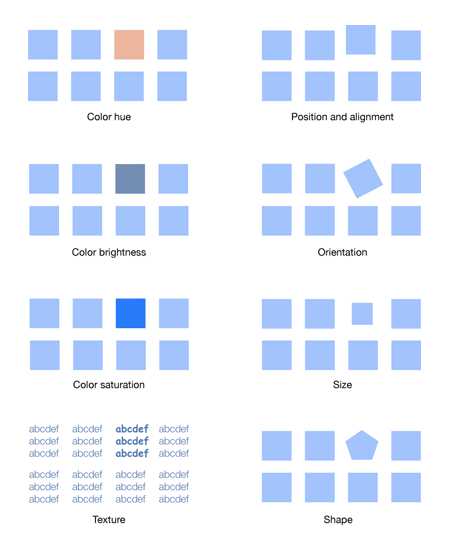Principled Design

I just finished reading a fascinating book: Jenifer Tidwell’s (one “n” only-not a typo) Designing Interfaces.
I found this book fascinating as it presented 94 different patterns
that users expect to see in well-designed software interfaces.
None of these patterns are grounded in rational science, rather they’re
a culmination of our learned conventions (e.g., what has evolved over
time as a de facto standard) and how our brain processes information.
If you want to know all the patterns, but the book. Here’s some great random information I gleaned from the book:
There are a few principles of design called the Gestalt Principles
that determine what humans consider effective design. Basically,
we interpret objects’ proximity, similarity, continuity and closure to
have meaning in design. Click the link above to see better
examples than I could ever hope to articulate.
A
similar interesting consideration in design is what is called
“preattention”. This is the concept that if you code data in a
certain way, you can subconsciously process it.
Basically,
our brain’s visual cortex is an incredibly powerful computer.
Over time it has evolved an ability to rapidly sort through certain
types of information incredibly fast irrespective of how large the data
set is. You don’t even have to think: your visual cortex begins
sorting the information preattentively i.e., before you give it any
conscious attention.
There’s
a catch though. The information has to be coded in the right
way. IF I give you a list of 1,000 numbers and ask you to find
any number larger than 7, it will take you ages. However, if I
give you a list of 1,000 numbers and all the numbers larger than 7 are
coloured red vs. black for the rest, it will take you almost no time to
find them. In fact, there are 8 different ways to differentiate
information preattentively (see the following illustration lifted from Tidwell’s site; it also appears in the book):

One last bit of info. It turns out that having a “pretty” website is important. The Stanford Web Credibility Project has apparently found out that “appearance” is the most important item to users when they attempt to judge a website. Even Don Norman, who wrote a famous book emphasizing the importance of usable design, has gotten into the act claiming that “Attractive things work better” (he even wrote a book on it).
Thursday, February 8, 2007